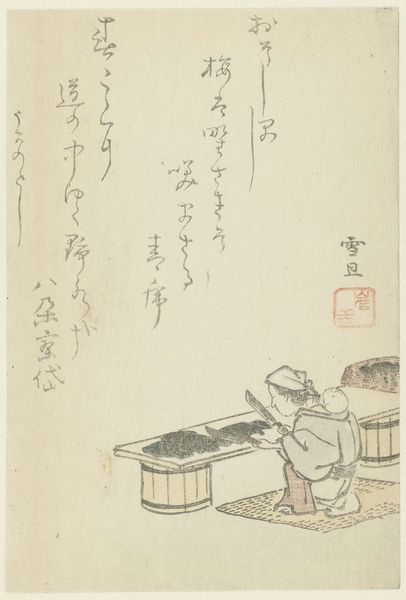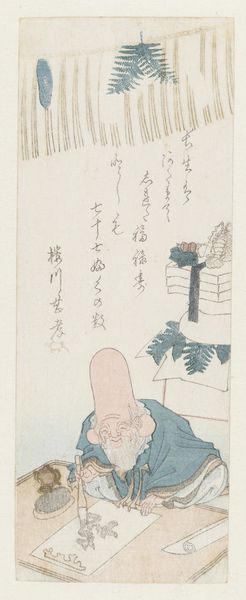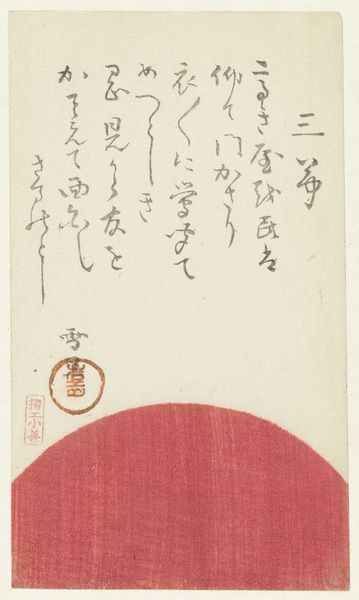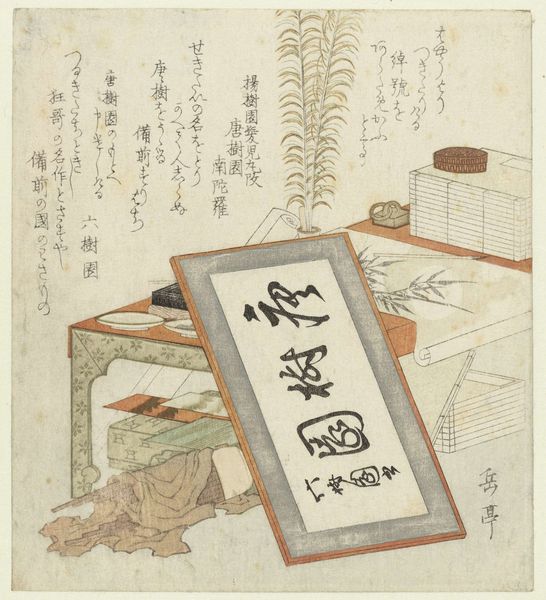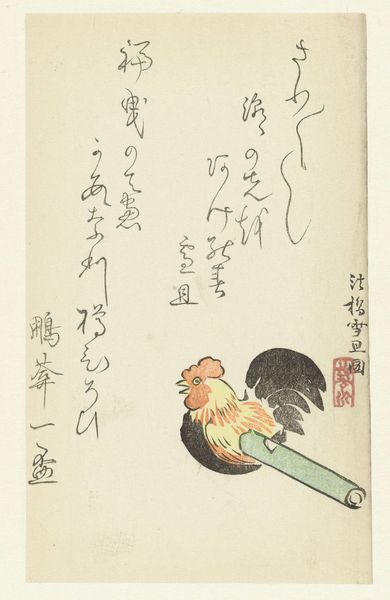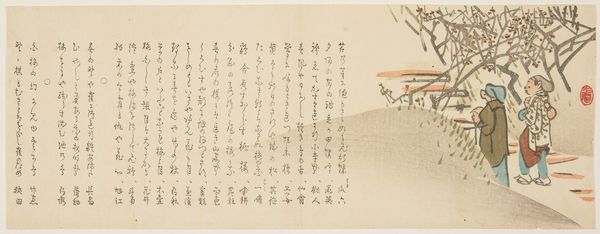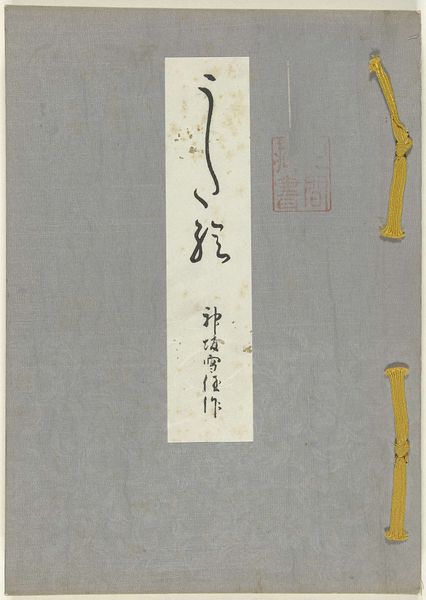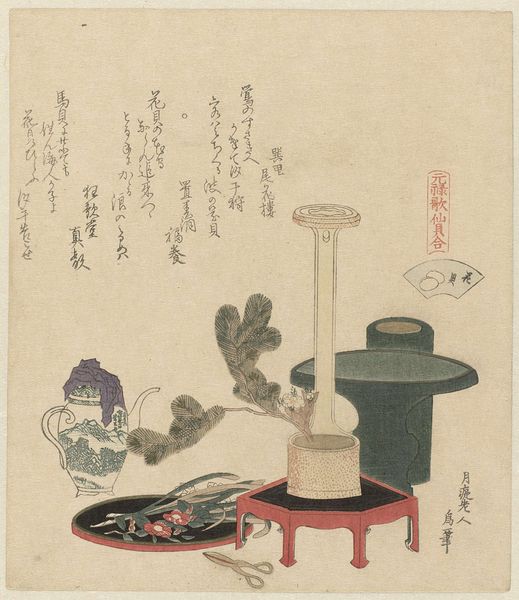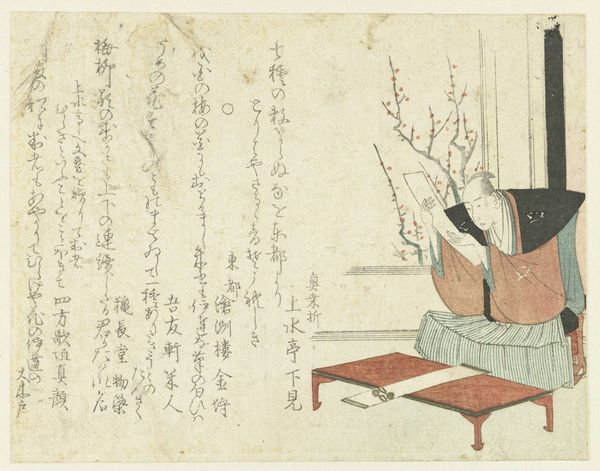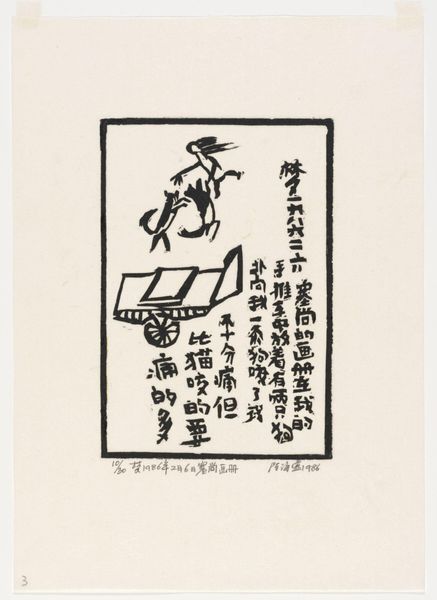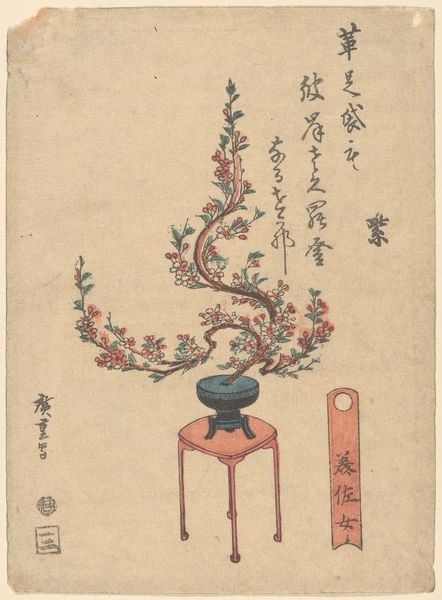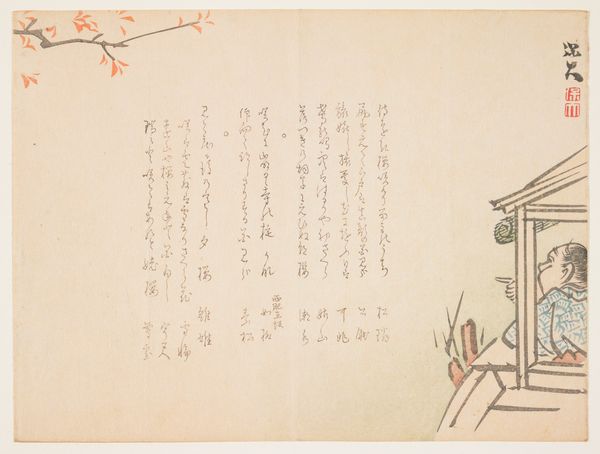
drawing, ink
#
drawing
#
blue ink drawing
#
asian-art
#
furniture
#
ukiyo-e
#
ink
#
pen-ink sketch
Dimensions: height 191 mm, width 112 mm
Copyright: Rijks Museum: Open Domain
Editor: This ink drawing, “Smoking Set on Bench,” made around 1810 to 1815 by Utagawa Kunisada, feels so delicate and ephemeral. The sparse lines give it a sense of transience. I'm curious, what do you see in this piece beyond just a representation of objects? Curator: Well, it’s intriguing how Kunisada chooses to depict such commonplace objects. Consider the smoking set itself – within the Ukiyo-e tradition, mundane items like this could represent a refined lifestyle, a symbol of leisure and perhaps a touch of rebellion against the strict social norms. Editor: Rebellion? That's not something I would have immediately picked up on. Curator: Think about the act of smoking itself during that time. It was a pleasure, but one that also carried a certain social weight, right? This set isn’t just about tobacco; it’s about who gets to enjoy these small luxuries and what that signifies in the social hierarchy. How does the inclusion of text affect how you perceive the symbolism of these images? Editor: Good question. I can’t read Japanese script but I suppose that the artist or a patron might have been associating poetic references to smoking or leisure. The bench and smoking set also invite viewers to reflect on the ritual and cultural practice, instead of merely illustrating objects. Curator: Precisely! These aren't simple depictions. They're layered with meaning, revealing societal values and hinting at personal narratives of status and style through everyday objects. It allows us to imagine the stories around those who use the bench and set, their gatherings, and reflections on life. Editor: I see it now, this piece tells a rich story through what it chooses to show, but perhaps more so through what it implies. Curator: Absolutely, and in the tradition of ukiyo-e, it connects us to the everyday lives and cultural values of people in the Edo period, bridging the past with our present contemplation.
Comments
No comments
Be the first to comment and join the conversation on the ultimate creative platform.
